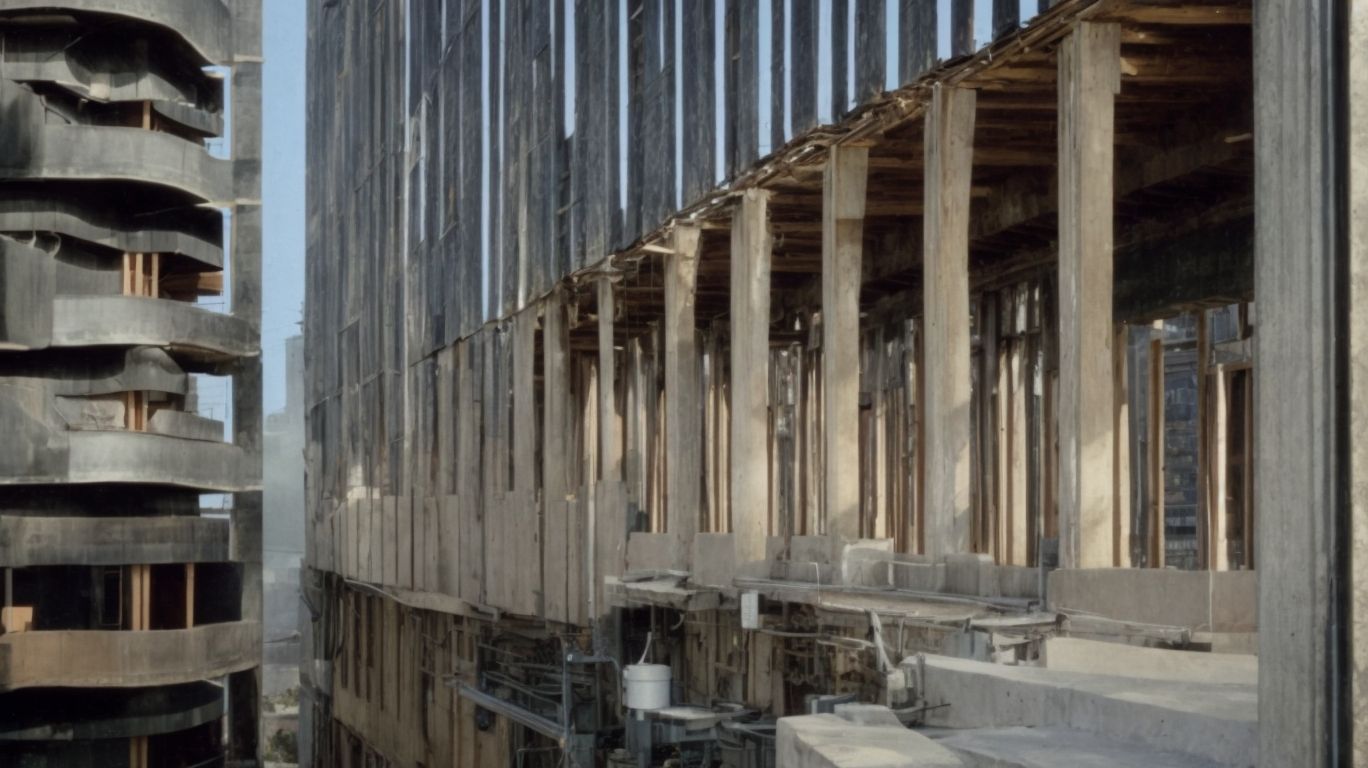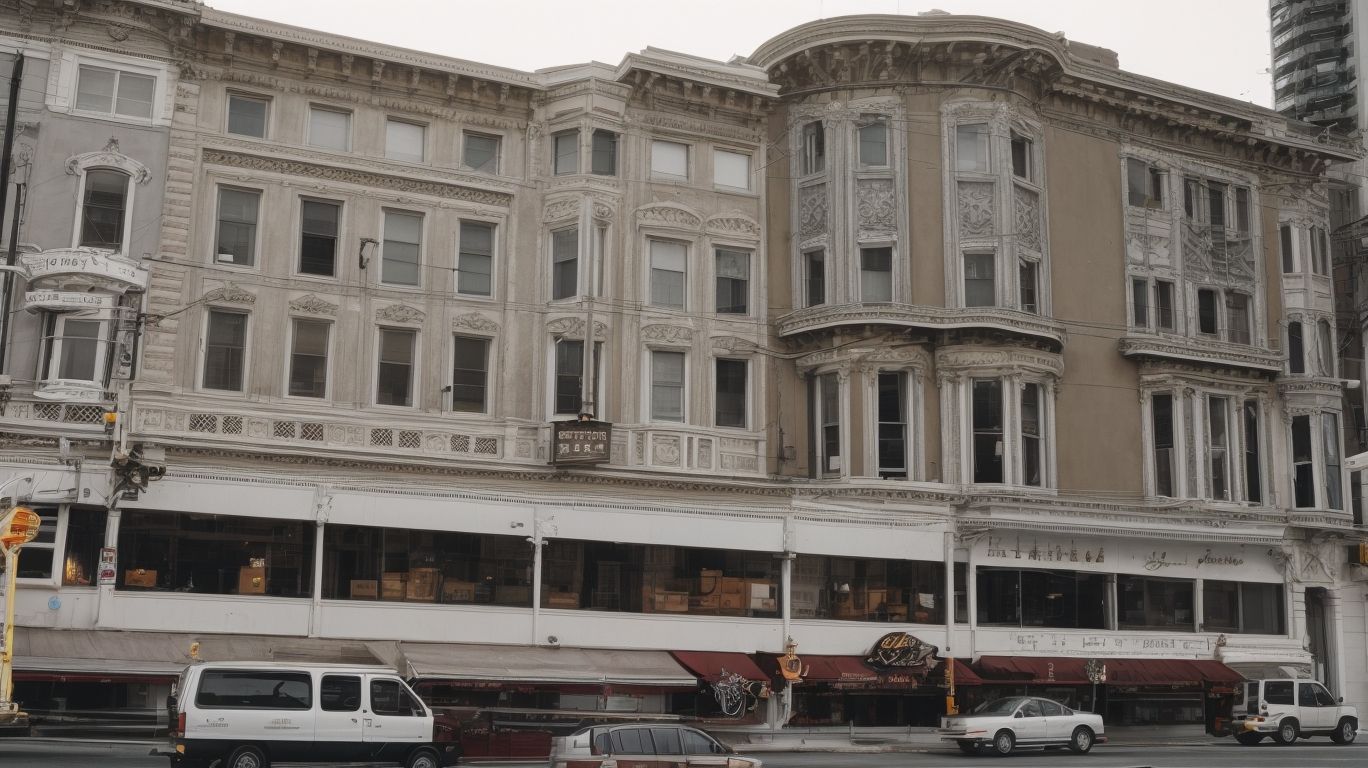
Understanding Soft-Story Retrofitting: A Comprehensive Guide
Soft-story retrofitting is a crucial process for reinforcing buildings with weak first floors. This makes them more resistant to seismic activity and potential collapse.
In this comprehensive guide, we will explore the importance of soft-story retrofitting and the different types of buildings that may require it. We will also discuss the signs that a building may need retrofitting and the process of retrofitting itself. Additionally, we will cover the benefits of retrofitting and how to choose a qualified contractor for the job.
Whether you are a property owner or simply interested in the topic, this guide will provide valuable insights into the world of soft-story retrofitting. By breaking down the information into concise, easily digestible sections, we aim to enhance both readability and search engine indexing. So let’s dive in and learn more about this crucial process for building safety and stability.
What is Soft-Story Retrofitting?
Soft-story retrofitting refers to the process of reinforcing or strengthening the lower stories of a building to improve its resistance to seismic forces and ensure structural integrity and building safety.
This retrofitting method is crucial in mitigating the inherent vulnerability of multi-story buildings with open or weak first floors, commonly found in older structures.
By incorporating structural enhancements such as additional bracing, shear walls, or column supports, soft-story retrofitting aims to enhance the building’s ability to withstand lateral forces during an earthquake.
Not only does this process bolster the structural stability of the building, but it also plays a significant role in complying with building codes and regulations, thereby contributing to the overall safety and resilience of communities in earthquake-prone regions.
Why is Soft-Story Retrofitting Important?
Soft-story retrofitting holds immense importance in safeguarding buildings against seismic events and ensuring their structural integrity, thereby enhancing building safety and making them more earthquake-resistant.
Soft-story retrofitting is a crucial process that helps strengthen buildings, particularly in multistory structures with soft, open frontages at the ground level. This process effectively reinforces vulnerable areas, reducing the risk of collapse and damage during earthquakes. It not only protects occupants but also preserves property.
In addition to its protective benefits, soft-story retrofitting is necessary for compliance with earthquake-resistant construction regulations. It significantly contributes to improving the overall resilience of structures in earthquake-prone regions, making it an essential step in ensuring the safety and stability of buildings.
What are the Types of Soft-Story Buildings?
Soft-story buildings encompass various types, including residential buildings, commercial structures, and mixed-use properties, each presenting unique retrofitting challenges and considerations.
Residential soft-story buildings often feature open spaces on the ground floor to accommodate parking or storefronts. However, these open spaces can compromise structural integrity during seismic events.
Similarly, commercial soft-story structures typically have large open spaces for retail or office use, making them susceptible to collapse. This is why a comprehensive approach to retrofitting is necessary to address the specific vulnerabilities of these buildings.
Mixed-use properties, which combine residential and commercial elements, present an even greater challenge for retrofitting. This is because they require tailored strategies to enhance their resilience and mitigate the risks associated with soft-story construction.
Residential Buildings
Residential buildings are among the common types of structures that may necessitate soft-story retrofitting, requiring thorough risk assessment to identify vulnerable buildings and implement appropriate retrofitting measures.
This process involves conducting a comprehensive evaluation of the structural integrity and vulnerabilities of the building. The focus is on soft-story conditions that can compromise its stability during seismic events.
Tailored retrofitting solutions are then applied to address the identified vulnerabilities. This can include adding shear walls, strengthening foundation, or installing steel bracings. Key risk assessment factors include building age, construction materials used, and local geological risks.
Retrofitting plays a significant role in enhancing the structural resilience of residential buildings. This ensures the safety of occupants and minimizes potential damages during earthquakes or other disasters.
Commercial Buildings
Commercial buildings necessitate the expertise of structural engineers to assess their compliance with building codes and to devise effective soft-story retrofitting strategies that align with safety regulations and structural integrity standards.
Structural engineers play a critical role in evaluating the structural stability of commercial buildings. They identify vulnerable areas that require reinforcement and ensure that retrofitting solutions are reliable and compliant with regulations.
The complexities of retrofitting commercial structures demand in-depth knowledge of building materials, construction techniques, and local building codes. Structural engineers bring their expertise to ensure that the solutions are capable of withstanding potential seismic events or other structural stressors. Their involvement in the process is essential for achieving long-term safety and stability for commercial buildings.
Mixed-Use Buildings
Mixed-use buildings require comprehensive structural analysis to assess their adherence to construction regulations and to develop effective soft-story retrofitting plans that cater to the diverse usage and structural complexities of such properties.
This integrative approach is needed due to the unique challenges associated with retrofitting mixed-use buildings.
The diverse functions within these structures, such as commercial, residential, and sometimes industrial spaces, present a complex web of structural requirements. Tailored retrofitting solutions are essential to ensure that these versatile properties meet safety and compliance standards while maintaining functionality and usability.
Overcoming these challenges demands a deep understanding of the existing structure and thoughtful planning to address the specific needs of each occupancy within the building.
What are the Signs that a Building Needs Soft-Story Retrofitting?
Identifying the need for soft-story retrofitting involves recognizing specific signs such as cracks in walls or foundation, uneven floors or sloping, and doors and windows that stick, indicating potential structural vulnerabilities that require immediate attention.
Soft-story buildings are at risk of collapse during seismic events, and there are observable indicators that can signal potential risks. These include cracks in walls or foundation, which may indicate weakening structural integrity, as well as uneven floors and sloping that could point to settlement issues. Additionally, doors and windows that stick could be a sign of excessive movement, further compromising the stability of the building. It is crucial to address these signs through proactive assessment and timely retrofitting interventions in order to mitigate structural risks and ensure the safety of occupants and the longevity of the building.
Cracks in Walls or Foundation
Cracks in walls or foundation of a building warrant thorough risk assessment to evaluate their impact on structural integrity and to determine the necessity of implementing soft-story retrofitting measures to address potential vulnerabilities.
This is essential as these cracks can be critical indicators of the building’s stability and could lead to significant structural vulnerabilities. If left unaddressed, these issues can pose various risks such as compromised safety for occupants, reduced structural support, and potential damage to the property.
Therefore, it’s crucial to prioritize comprehensive risk assessment and consider retrofitting interventions to minimize the potential threats associated with these structural damages.
Uneven Floors or Sloping
The presence of uneven floors or sloping in a building necessitates the expertise of structural engineers to conduct rigorous risk assessment and determine the appropriate soft-story retrofitting measures to rectify the structural irregularities and ensure building stability.
This is crucial because identifying uneven floors or sloping is often indicative of potential structural issues that, if left unaddressed, could compromise the safety and stability of the entire building.
Structural engineers play a pivotal role in conducting thorough evaluations, leveraging their expertise to pinpoint the root causes of these irregularities. Professional evaluation and the implementation of targeted retrofitting solutions are essential to address these structural anomalies effectively, ensuring the long-term structural integrity of the building.
Doors and Windows that Stick
Doors and windows that stick serve as tangible indicators of potential structural deficiencies, prompting the need for retrofitting interventions to enhance the building’s resistance to seismic forces and to ensure the reliable operation of entry points in the structure.
The presence of sticking doors and windows can signify compromised structural integrity, making them crucial elements to consider in the context of seismic retrofitting.
Addressing these issues is critical as they not only affect the functionality and safety of the building, but also indicate vulnerabilities that can escalate seismic risks.
Effective retrofitting measures can strengthen these entry points, contributing to the overall fortification of the building and ensuring it can withstand seismic events with greater resilience.
How is Soft-Story Retrofitting Performed?
Soft-story retrofitting involves various methodologies such as strengthening existing columns and beams, adding lateral support systems, and installing shear walls to enhance the structural stability and seismic resilience of buildings.
Retrofitting techniques are essential in fortifying a building’s structural integrity and mitigating seismic risks. Strengthening existing columns and beams helps distribute the load more effectively, reducing vulnerability to seismic forces.
Lateral support systems, such as bracing and moment frames, play a crucial role in enhancing a building’s ability to withstand lateral forces. Integrating shear walls also adds stiffness, effectively reducing susceptibility to seismic damage.
By employing these interventions, buildings can greatly improve their capacity to withstand seismic events and ensure the safety of occupants.
Strengthening Existing Columns and Beams
The process of strengthening existing columns and beams in soft-story retrofitting requires adherence to construction regulations and the expertise of structural engineers to implement robust reinforcement measures that align with safety standards and structural integrity requirements.
Ensuring compliance with construction regulations is essential in the retrofitting process. This guarantees that the reinforcement measures meet the necessary standards for load-bearing capacities.
Structural engineers play a crucial role in devising effective strategies to enhance the resilience of the building’s structural elements. This can include utilizing advanced materials and techniques to strengthen existing columns and beams.
Retrofitting measures are significant not only in addressing potential vulnerabilities, but also in increasing the overall safety and stability of the structure. This is especially important in the event of seismic activity or other unforeseen events.
Adding Lateral Support Systems
Incorporating lateral support systems as part of soft-story retrofitting necessitates comprehensive seismic retrofit assessments to determine the optimal placement and design of these systems, enhancing the building’s resistance to seismic forces and reinforcing its structural stability.
This strategic consideration plays a crucial role in mitigating seismic risks by addressing vulnerabilities in buildings that are susceptible to collapse during earthquakes.
Tailored placement and design of lateral support interventions are essential to optimize their effectiveness, distributing seismic loads and reducing the potential for structural damage.
By carefully assessing the building’s specific requirements and vulnerabilities, engineers can implement customized lateral support systems that provide the necessary reinforcement to ensure the structure’s resilience against seismic events.
Installing Shear Walls
Installing shear walls forms a pivotal aspect of soft-story retrofitting, requiring strict adherence to building codes and retrofitting standards to implement robust wall structures that enhance the building’s resistance to lateral forces and improve its overall structural integrity.
Wall structures are essential for fortifying a building against seismic or wind-induced lateral forces. It’s crucial to comply with local building codes and retrofitting standards to ensure that shear walls are designed and installed to meet specific requirements for soft-story retrofits.
Shear walls have a significant structural impact as they redistribute forces, reducing the risk of catastrophic structural failure during earthquakes or high-wind events. Their presence greatly enhances a building’s resilience and ensures the safety of its occupants.
What are the Benefits of Soft-Story Retrofitting?
Soft-story retrofitting offers a multitude of benefits, including increased structural stability, improved safety for occupants, and the protection of property and assets against the destructive impact of seismic events.
This type of retrofitting helps to strengthen the lower levels of buildings, which are vulnerable during earthquakes due to their weaker construction. By reinforcing these soft stories, the overall structural integrity of the building is enhanced, providing a higher level of protection to occupants and assets.
The retrofitting process can also increase the market value of the property and reduce insurance premiums, making it a sound investment for building owners and property managers.
Increased Structural Stability
One of the primary benefits of soft-story retrofitting is the significant enhancement of structural stability. This is achieved through meticulous seismic retrofit assessments and the implementation of targeted retrofitting measures to fortify the building’s resistance to seismic forces.
This comprehensive approach ensures that buildings can better withstand the impact of earthquakes, safeguarding both the occupants and the structural integrity of the property.
By addressing vulnerabilities in the building’s design, such as weak first floors or open-front commercial spaces, soft-story retrofitting brings about a transformative impact. It significantly bolsters the overall structural resilience and reduces the potential risks associated with seismic events.
Improved Safety for Occupants
Soft-story retrofitting significantly improves the safety and security of occupants, particularly in vulnerable buildings, by fortifying the structure against seismic risks and ensuring compliance with building safety regulations.
Such retrofitting measures play a pivotal role in mitigating the potential impact of seismic events, thereby reducing the risk of structural collapse and enhancing the overall resilience of the building.
By addressing structural vulnerabilities and reinforcing key elements of the building’s design, occupants are better protected in the event of an earthquake. This proactive approach not only safeguards lives but also minimizes the potential for extensive property damage, promoting a safer and more secure environment for those who live and work in these structures.
Protection of Property and Assets
Soft-story retrofitting acts as a crucial safeguard for protecting property and assets against the potential devastation caused by seismic events. It ensures compliance with construction regulations and bolsters the structural resilience of the building.
Soft-story retrofitting is a proactive approach to mitigating the risk of collapse during earthquakes by addressing structural vulnerabilities in multi-level buildings. This intervention involves strengthening weak floors, adding lateral support, and reinforcing foundation elements to enhance the building’s ability to withstand seismic forces.
These strategic retrofitting measures are crucial in fortifying the property and assets within the structure, minimizing potential damage, and preserving the value of investments in the event of a seismic event.
How to Choose a Soft-Story Retrofitting Contractor?
Selecting a competent soft-story retrofitting contractor requires careful consideration of their expertise in retrofitting, the involvement of qualified structural engineers, and their proficiency in conducting thorough risk assessments to tailor effective retrofitting solutions.
When seeking a contractor, it’s essential to verify their track record in similar projects, ensuring their capability to deliver successful outcomes.
A vital aspect to evaluate is their approach to risk assessment; a contractor should have a proactive strategy in identifying potential hazards and addressing them effectively. Their qualifications and certifications should be thoroughly reviewed to ensure compliance with industry standards.
The contractor’s involvement in every phase of the retrofitting process guarantees thorough evaluations and guarantees the adherence to required safety measures.




No Comments